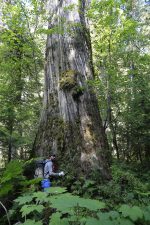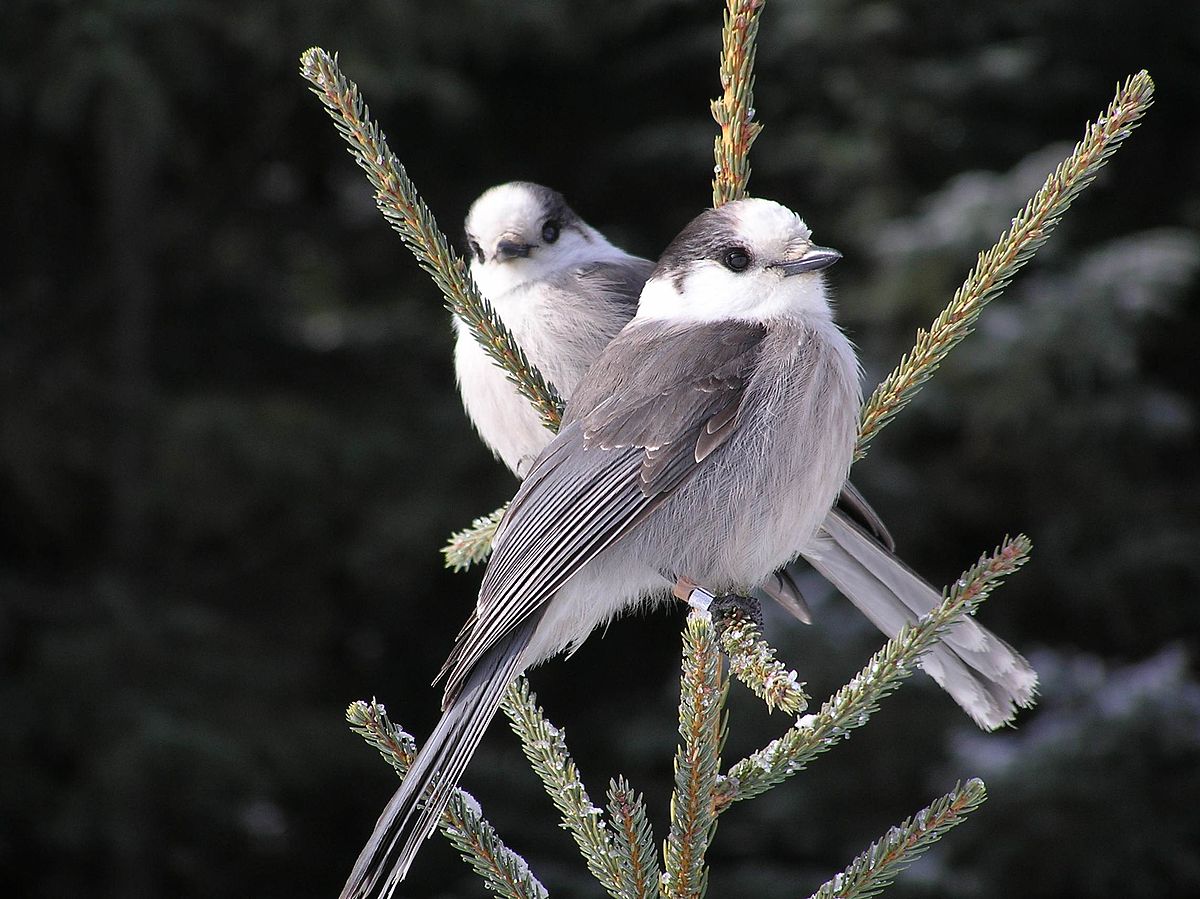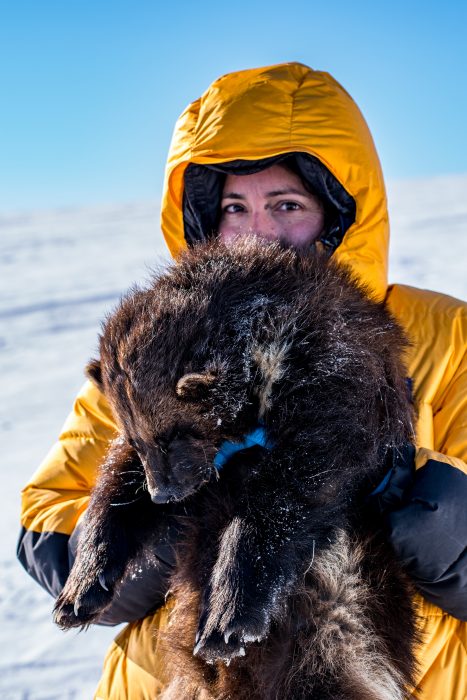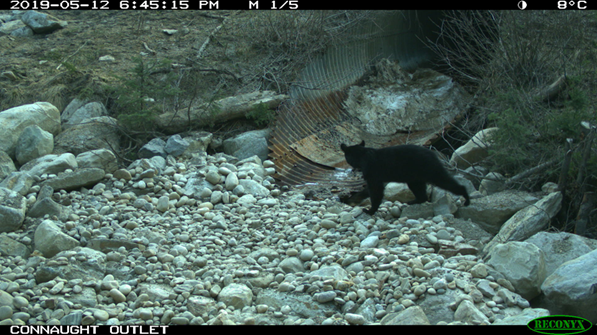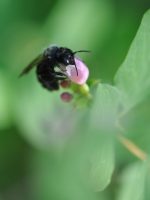CREDtalks (Columbia Region Ecological Discussions)
- Start Date: January 18, 2024
- End Date: March 21, 2024
- Time: Noon-hour on Thursdays, Pacific Time. See details below.
- Venue: online via Zoom
- Registration for season 8 still open, recording links below
The Columbia Region Ecological Discussions include speakers addressing a diversity of topics such as science communication, active ecological management, citizen science, research skills and techniques, and applied ecological research projects. See below for a list of past and upcoming talks. Talk recordings are posted on this web page and available on our YouTube channel here.

Thanks to the Columbia Basin Trust for their continued support of this project. Thank you also to LGL Limited for the sponsorship of season 8.
Season 8: Wildlife corridors and ecological connectivity
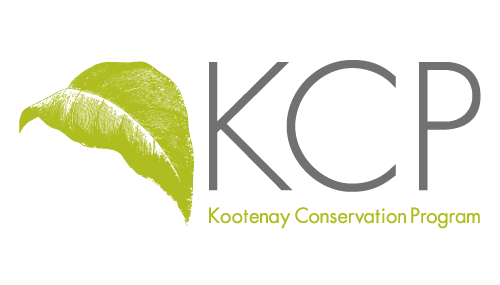 In partnership with the Kootenay Conservation Program (KCP) we present season 8 of CREDtalks on the theme of Wildlife corridors and ecological connectivity.
In partnership with the Kootenay Conservation Program (KCP) we present season 8 of CREDtalks on the theme of Wildlife corridors and ecological connectivity.
Ecological connectivity, defined as the unimpeded movement of species and the flow of natural processes through a landscape, is essential to maintaining and restoring healthy wildlife populations, protecting biodiversity, and developing climate resilience in a changing world. Whether it’s having enough room to roam for finding food, mates, and a safe space to call home, different species have different requirements for travel. Current research and knowledge of wildlife movement underscores the importance of connected high-quality habitats in working landscapes between protected and conserved lands as well as safe passage through private lands in valley bottoms managed with wildlife-friendly practices and strategies. In this webinar series, wildlife corridors and ecological connectivity will be discussed from different perspectives that provide a wide view that can inform conservation of connected and resilient landscapes in the Columbia Basin. We’ll explore corridors and connectivity through the lenses of wildlife biology and landscape architecture; Indigenous stewardship principles in forestry practices and fire management; road ecology and highway crossing structures; human-wildlife coexistence; and how connectivity is embedded in a larger context of ecological integrity and functioning ecosystems.
Thanks to the generous support of the Columbia Basin Trust and KCP, we are able to offer this series free of charge.
REGISTER HERE for any of the webinars in this series
Landscape connectivity from a wildlife biologist’s perspective
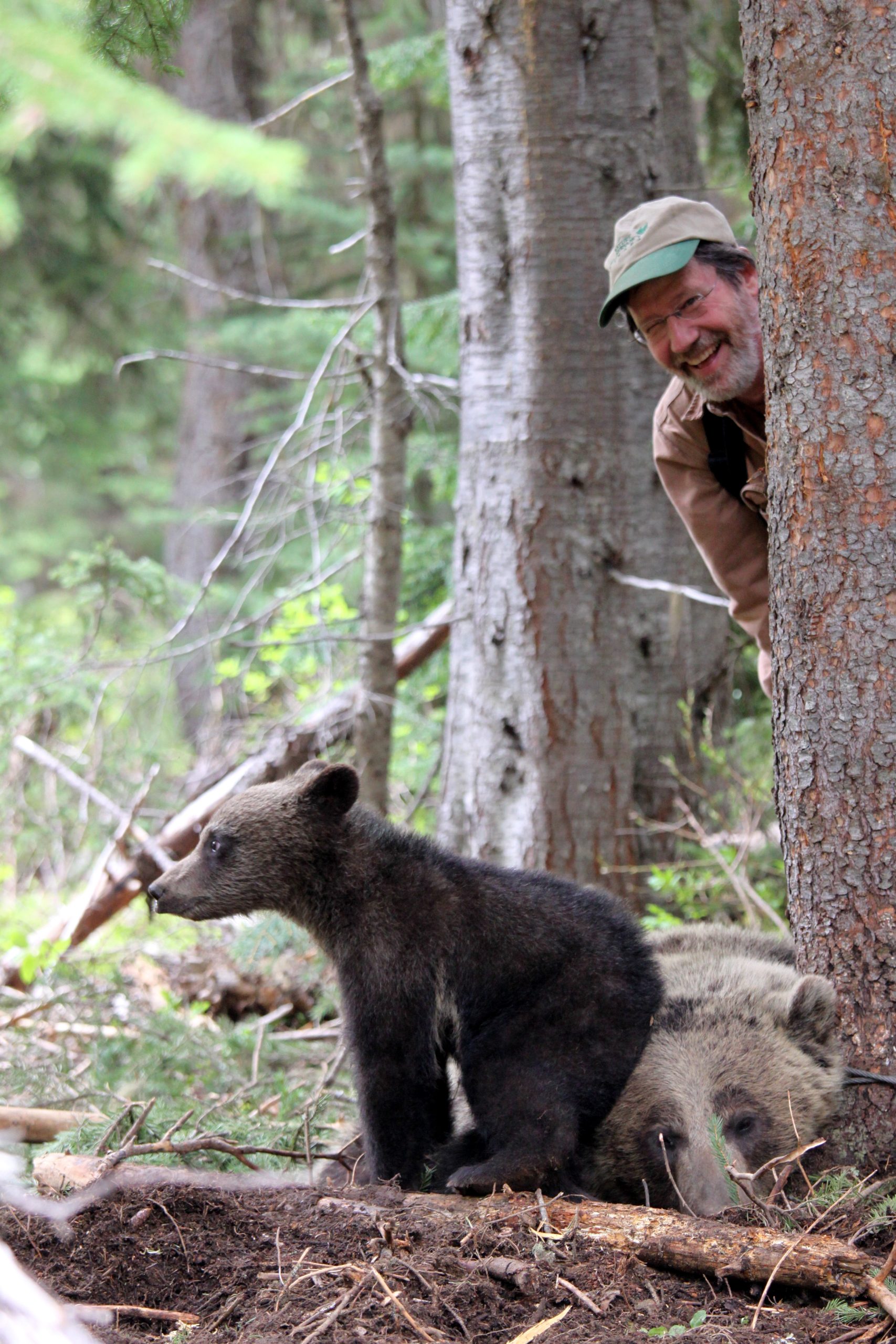 Thu, January 18, 2024 Live webinar at 12pm PST
Thu, January 18, 2024 Live webinar at 12pm PST
Presenter: Dr. Michael Proctor, TransBorder Grizzly Bear Project, Kootenay Connect, IUCN Species Survival Commission
There is a global movement to recognize and conserve ecological corridors throughout the world. Connected ecosystems enhance biodiversity and increase landscape resilience to climate change. This talk explores a success story of how re-establishing and managing connectivity for grizzly bears in the trans-border region of the Creston Valley evolved into a larger initiative to create a regional network of corridors connecting valley bottoms to uplands, biodiversity hotspots, protected areas, and climate refugia benefiting wildlife and human communities in the Kootenay region. Michael will relate the local to the global while providing examples along the way including western toads, northern leopard frogs, badgers, elk, wolverines and more.
Resources referenced in this talk:
View talk recording here
What is a landscape architect and how can they contribute to land use planning and wildlife habitat?
 Thu, January 25, 2024. Live webinar at 12pm PST
Thu, January 25, 2024. Live webinar at 12pm PST
Presenter: Leslie Lowe, RLA, Beargrass Landscape Architecture
As a Landscape Architect, Leslie weaves connections across a mosaic of land types by finding ways to strengthen wildlife habitat and repair native ecosystems within disturbed human/agricultural environments. In 2020, in partnership with biologist Marc-André Beaucher, she created a master plan for the Creston Valley Wildlife Management Area (CVWMA) for the south end of the Duck Lake Nesting Area that focuses on the Frog Bear Corridor. The master plan identifies how to increase multi-species habitat connectivity through a matrix of open grasslands, wetlands, and riparian or riparian edge habitat. The master plan takes a holistic approach to give the CVWMA a toolbox of ideas to implement and creates a landscape that balances ecological and agricultural values. Leslie’s guidance includes maps, species documentation, plant lists, seed protocols, live staking procedures, and other restoration techniques.
In this talk Leslie will present ideas for what can be done at a site scale for enhancing wildlife corridors and ecological connectivity from the perspective of a landscape architect. Leslie will provide an update on the status of the CVWMA sites with specific examples of results observed for target species such as the Northern Leopard and Bobolink, as well as the significant strides that have been made in the implementation of the master plan.
Resources referenced in this talk:
View talk recording here
All Living Things: A cultural approach to reconcile First Nations stewardship rights with resource management
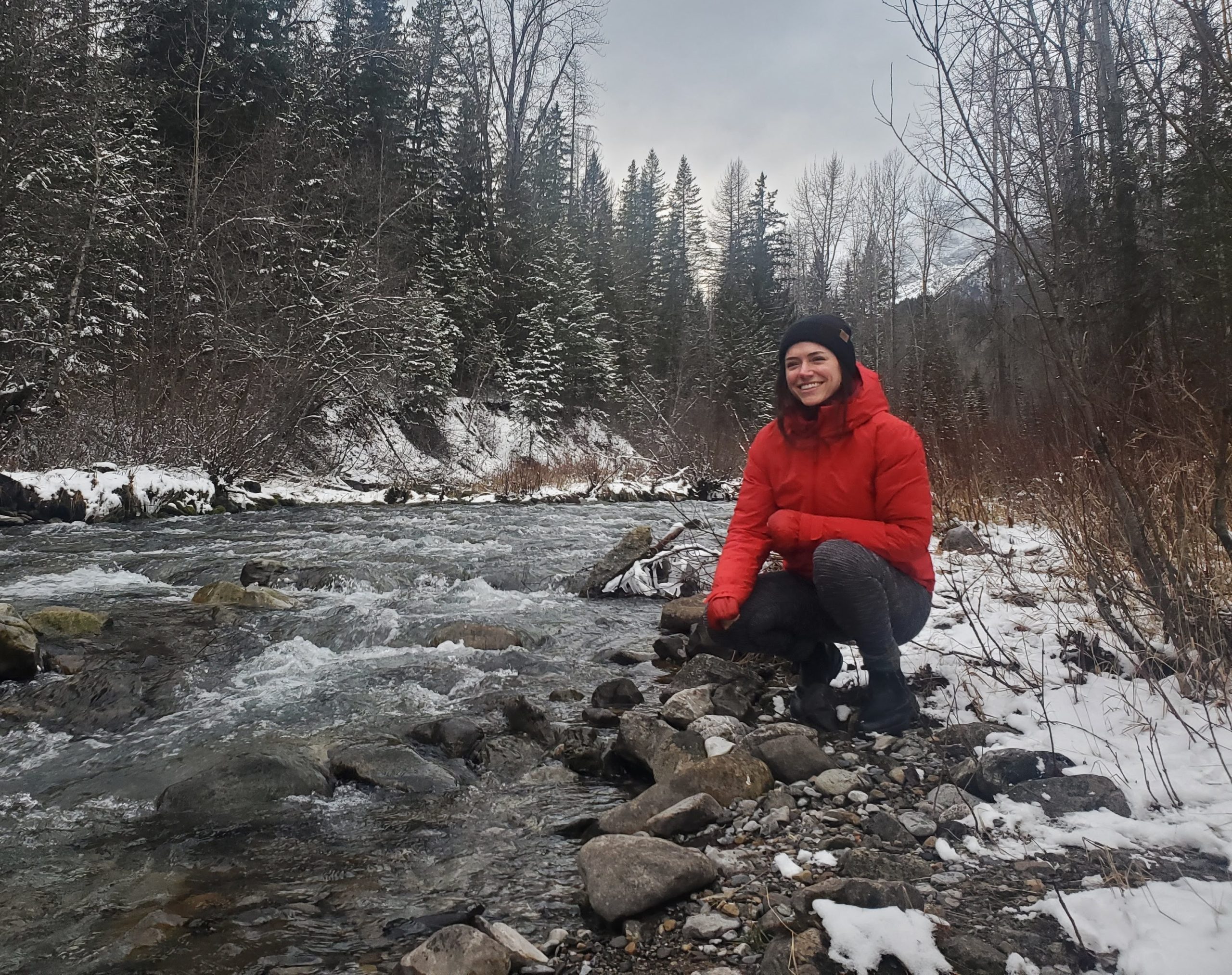
Thu, Feb 1, 2024. Live webinar at 12pm PST
Presenter: Sara Deslauriers, MFC, FIT, Ktunaxa Nation Council
Consultation with First Nations is meant to provide a consensus-based shared decision-making process, yet many communities are short on capacity and time, while also inundated with industry referrals. Old growth forests are eroded, landscapes become increasingly fragmented, wildlife is disrupted, and First Nations land-use rights are degraded, along with the land itself. Through the creation of their Forestry Standards Document, the Ktunaxa Nation Council is attempting to bridge these gaps, and also address the demands of mitigating the impacts of operational forestry at a cutting permit and cutblock scale. This living document is a culturally and environmentally logical compendium of land use guidelines for operational forestry. In this talk, Sara will discuss how Ktunaxa’s approach seeks to enhance the values in the Forest and Range Practices Act (FRPA) by reflecting the current state of the landscape and the need for conservation, connectivity, and an understanding that stewarding the land is more than a responsibility – it’s a Right.
Resources referenced in this talk:
- Ktunaxa Forestry Standards document for foreestry within ʔamak?is Ktunaxa
- BC Forest & Range Practices Act
Integrated Fire Management Planning: Mitigating risk to the ecological integrity and function of regional connectivity corridors
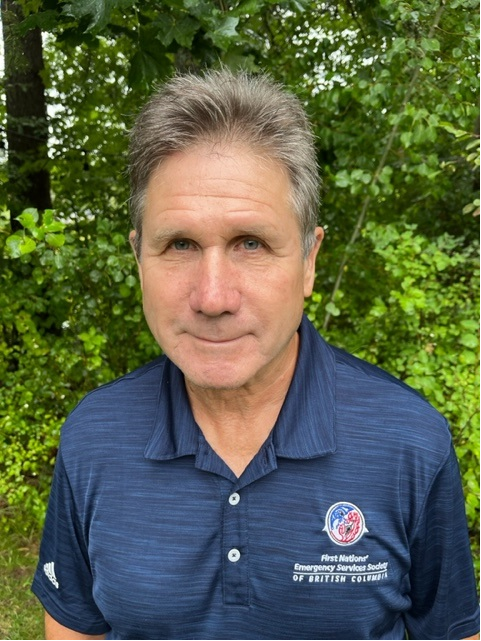 Thu, Feb 15, 2024. Live webinar at 12pm PST
Thu, Feb 15, 2024. Live webinar at 12pm PST
Presenter: Larry Price, RPF, Mitigation Specialist, First Nations Emergency Services Society
Currently within British Columbia at strategic, tactical, and operational levels there is a lack of collaborative all hazard risk planning. Current wildfire mitigation programs focus on project-based planning and do not take into account multi-resource planning through space and time. Wildfire prevention initiatives need to be developed with consideration for multi-resource management planning on the land base over the short (0 to 20 years) and longer-term for 7 generations (200 years +).
First Nations Emergency Services Society (FNESS) is working with First Nations to develop an integrated spatial data base and planning tools to support collaborative planning. Regional connectivity corridors have been identified as a key component for biodiversity and wildfire landscape resiliency. Integrated Fire Management (IFM) Planning provides a framework to develop and implement management strategies that will maintain or enhance the ecological integrity and function of regional connectivity corridors through space and time. This along with strategies and actions for managing a wide range of values on the natural and built environment, are necessary for creating conditions that support wildfire resiliency throughout British Columbia.
Resources referenced in this talk:
View talk recording here
Roads, roads, and more roads: The plight of animal movement in the Anthropocene
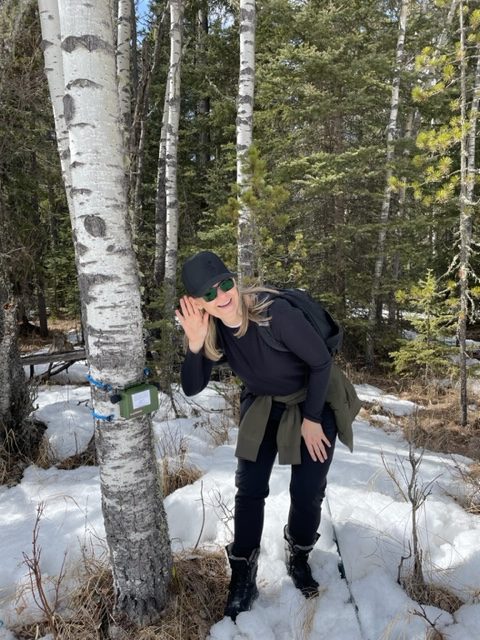 Thu, Feb 22, 2024. Live webinar at 12pm PST
Thu, Feb 22, 2024. Live webinar at 12pm PST
Presenter: Tracy Lee, MSc, Miistakis Institute
As geologists debate if we are in a new epoch due to human activity on the planet, the Anthropocene, and biologists consider if we are experiencing the 6th greatest extinction, do we really have time to think about roads and wildlife? Roads are ubiquitous on the landscape, and are essential to human wellbeing, and yet for most other non-human inhabitants on the planet roads are bad news. It is therefore important that we understand how roads impact wildlife, and that we identify solutions to address these impacts if we want to maintain biodiversity.
Tracy will review several road ecology research initiatives lead by the Miistakis Institute to identity where wildlife cross roads, from pronghorn to wood frogs. But knowing where animals cross is only a small component of reducing road impacts – we also need to invest in solutions. Here, we will explore efforts to build social capital around road mitigation, and better integrate road and landscape connectivity concerns into transportation planning and policy.
Resources referenced in this talk:
View talk recording here
A global overview of wildlife crossings – examples of maintaining functional connectivity across roads for a variety of species
 Thu, Feb 29, 2024. Live webinar at 12pm PST
Thu, Feb 29, 2024. Live webinar at 12pm PST
Presenter: Rob Ament, MSc, Centre for Large Landscape Conservation, IUCN Connectivity Specialist Group, IUCN Transport Working Group, & IUCN Asian Elephant Working Group
Rob will show how different countries on six continents are all tackling the common issue of making roads more permeable and less lethal for wildlife. He will cover a variety of taxa that are the focus of the crossing designs, from arboreal primates, large herbivores, and meso-carnivores to birds and reptiles. Viewers may find it interesting to see how crossing designs change among different cultures and environments.
Resources referenced in this talk:
- Centre for Large Landscape Conservation
- IUCN Connectivity Conservation Specialist Group
- Asian Elephant Specialist Group (AsESG)
- Key publications referenced in this talk
View talk recording here
The trappings of success: the critical role of social carrying capacity in fostering long-term human-grizzly bear coexistence promoting safe and functioning wildlife corridors
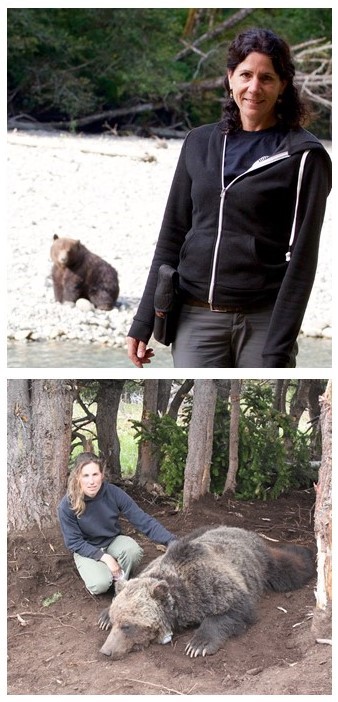
Thu, March 14, 2024. Live webinar at 12pm PST
Presenters: Dr. Lana Ciarniello, Human-Bear Conflict Expert Team Co-Chair, IUCN SSC BSG and North American Bear Expert Team, IUCN SSG BSG; and
Dr. Michelle McLellan, North American Bear Expert Team, IUCN SSG BSG
Wildlife corridors are more secure when human-wildlife conflicts can be reduced. Lana and Michelle’s talk will examine the success of coexistence strategies in an agricultural community that is critical to the recovery of southwest BC’s five Threatened grizzly bear populations, Pemberton Meadows. The Pemberton Meadows bears are needed to gradually and naturally augment the adjacent small and struggling populations, highlighting the importance of using a multi-scaled approach that includes connectivity and long-term coexistence. They will discuss seasonal resource selection function models they developed to predict connectivity among core habitat and populations and on-site evaluations to identify corridors allowing bears to naturally move across the Meadow. They will explain how the corridor design was supported by proactive Bear Smart management that fosters human-bear coexistence as an antidote to habitat fragmentation by managing the “ecological traps.”
This talk will also discuss the critical role that social carrying capacity plays in grizzly bear recovery and the importance of preventing or resolving conflicts before residence tolerance for bears declines.
Resources referenced in this talk:
- IUCN Bear Specialist Group
- IUCN Species Survival Commission Bear Specialist Group
- Michelle McLellan: the papers referenced in here talk are available here and here
- Pemberton Meadows Hazard Assesment
View talk recording here
Context matters: landscape connectivity and ecological integrity
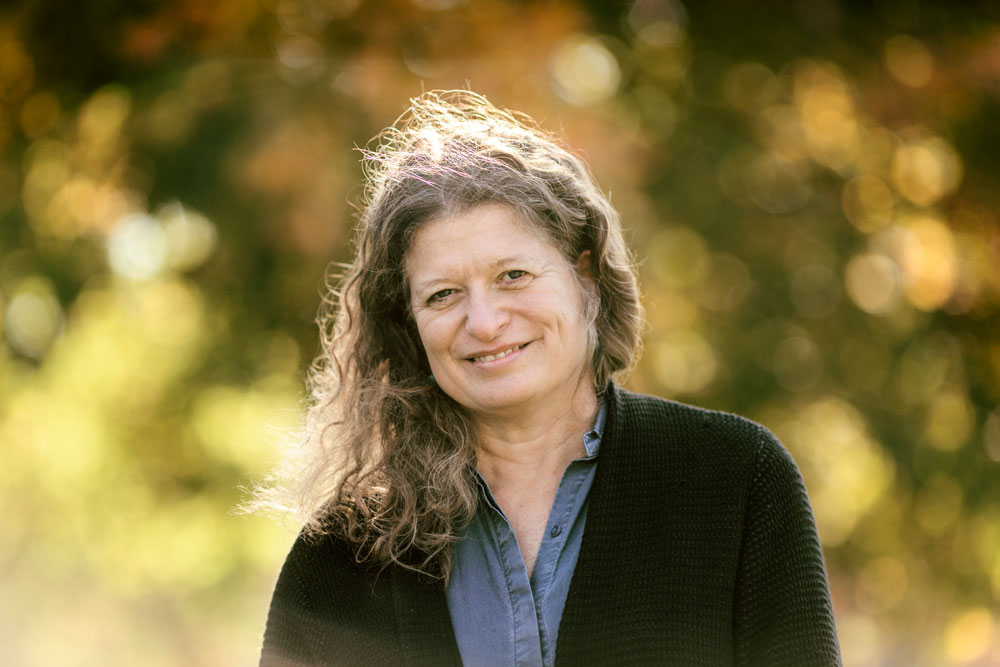 Thu, March 21, 2024. Live webinar at 12pm PST
Thu, March 21, 2024. Live webinar at 12pm PST
Presenter: Dr. Justina Ray, Wildlife Conservation Society Canada
Ensuring for ecological connectivity becomes critical as soon as habitat fragmentation of a once ecologically intact system is underway. This makes it necessary to understand the character and significance of high ecological integrity ecosystems, i.e., where composition, structure, and function are within their natural state, but are diminishing at a global scale. Mounting evidence suggests that healthy, high integrity ecosystems are better able to persist, and to deliver the critical services on which humanity depends, than those on the lower end of the continuum characterized by fragmentation, degradation, and species loss. In this talk, Justina will explore the essential role that unfragmented, unroaded, and undeveloped lands and waters play in sustaining biodiversity and landscape connectivity, and the particular responsibility that Canada bears for this theme when it comes to the domestic implementation of the Kunming-Montreal Global Biodiversity Framework.
Justina will be joined by presentation co-author Dr. Lucy Poley for this webinar’s Q&A.
Dr. Lucy Poley has a background conducting research on wildlife and habitat interactions at both landscape and site scales, using tools such as aerial surveys, drones, satellite imagery, and field assessments and in varied environments including the boreal forest, the Rocky Mountains, and the tundra. More recently, in her role as the Ecosystem Criteria Coordinator for the Key Biodiversity Areas (KBA) initiative in Canada, she has taken an ecosystem-based approach to conservation, looking at how to best map and understand the condition and distribution of ecosystems and areas of globally significant high ecological integrity, as well as threats to their persistence in an increasingly developed world.
Resources referenced in this talk:
- Wildlife Conservation Society Canada
- Key Biodiversity Areas Canada
- Forest Landscape Integrity Index
- Wildlife Conservation Society Canada: https://www.wcscanada.
org/ - Key Biodiversity Areas: https://kbacanada.org/
- Forest Landscape Integrity Index: https://www.
forestlandscapeintegrity.com/ home - Official text of the Kunming-Montreal GBF including goals, targets, and guidance from CBD secretariat: https://www.cbd.
int/gbf - Poley, L.G., R. Schuster, W. Smith, & J.C. Ray. 2022. Identifying differences in roadless areas in Canada based on global, national, and regional road datasets. Conservation Science and Practice 4: e12656. https://doi.org/10.
1111/csp2.12656 - Johnson, C.J., O. Venter, J.C. Ray, & J.E.M. Watson. 2020. Growth-inducing infrastructure represents transformative yet ignored keystone environmental decisions. Conservation Letters 13: e12696. https://doi.org/10.1111/conl.
12696 - Logging scars report: https://loggingscars.
ca/ - B.C.’s draft Biodiversity and Ecosystem Health Framework: https://www2.gov.
bc.ca/gov/content/environment/ plants-animals-ecosystems/ biodiversity/bc-s-draft- biodiversity-and-ecosystem- health-framework
View talk recording here
Season 7: Foundations of Resilience – Understanding departures from historical ecosystems and adapting for resilient futures
 In partnership with the Kootenay Conservation Program (KCP) we present season 7 of CREDtalks on the theme of Foundations of Resilience: Understanding departures from historical ecosystems and adapting for resilient futures.
In partnership with the Kootenay Conservation Program (KCP) we present season 7 of CREDtalks on the theme of Foundations of Resilience: Understanding departures from historical ecosystems and adapting for resilient futures.
Ecosystems have been drastically transformed over the past 100-200 years. These changes underpin many modern ecological challenges including extreme fire behaviour, insect infestations, drought, disease, habitat loss, and a biodiversity crisis. As these systems continue to change, there is a need to understand both where we came from, and where we are going. Management systems and actions interact with these changes and shape potential futures providing some opportunities to restore ecosystem resilience. However, restoring landscapes to increase their resilience, and adapt to a changing climate is complex. This requires new ideas, new collaborations, and new ways of thinking about the restoration of processes across systems, across disciplines, and across scales. Recognizing this, we have invited a diverse group of scientists and practitioners to share their lessons and findings. In this series, we draw on patterns from the past, challenges in the present, and scenarios for the future, to explore adapting for resilience in the Columbia Mountains Region.
Thanks to the generous support of the Columbia Basin Trust and KCP, we are able to offer this series free of charge.
How the past haunts our future: Colonization and the loss of dry forest resilience in the southern Rocky Mountain Trench of British Columbia
 Thu, Jan 26, 2023. Live webinar at 12pm PST
Thu, Jan 26, 2023. Live webinar at 12pm PST
Presenter: Gregory Greene, University of British Columbia
Catastrophic wildfires and “smoke seasons” are becoming common features of life in western North America. In dry forests, increases in fire severity are often attributed to uncharacteristically high forest fuel accumulations, compounded by changing climate. However, some research contests this notion, suggesting that high fuel loads and high severity fires have always been features of dry forests. Unfortunately, historical dry forest structures, and the specific factors that changed them, have never been reconstructed in British Columbia. These knowledge gaps hinder our ability to determine both the magnitude and implications of forest change. In this talk, Greg uses tree-ring evidence to reconstruct historical fire regimes and structures of dry forests in the southern Rocky Mountain Trench of British Columbia. He describes how these forests interacted with fires historically, how colonization altered forests and fire regimes, and what the implications of these changes are for forest resilience. Greg also provides specific actions to proactively augment resilience to offset the effects of the past.
View the recording for this talk here
Emerging landscape novelty
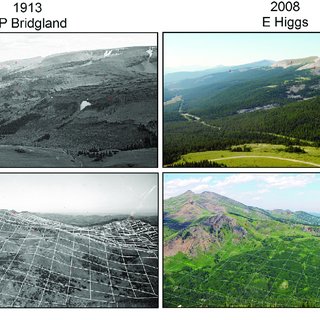 Thu, Feb 9, 2023. Live webinar at 12pm PST
Thu, Feb 9, 2023. Live webinar at 12pm PST
Presenters: Eric Higgs, School of Environmental Studies, University of Victoria; and Jeanine Rhemtulla, Associate Professor, Dept. Forest & Conservation Sciences, University of British Columbia
The development of the concept of novel ecosystems and the more general concept of ecological novelty acknowledge that non-analogue ecosystems are forming because of shifts in composition, pattern and function. The ecosystem scale has received the most attention, but recent work suggests novelty occurs at a landscape level and is not simply a scaled up version of novel ecosystems. We explore this in our presentation, and examine whether resilience is the most effective concept to cope with increasingly novelty. After all, restoration ecologists spend much of their time fighting against highly resilient “stuck” ecosystems. Instead, we explore whether adaptive capacity is better suited the task of supporting rapidly changing ecosystems and dependent human relationships.
Resources referenced in this talk:
View the recording for this talk here
Re-introducing fire as a process: Restoring disrupted fire regimes across landscapes

Thu, Feb 16, 2023. Live webinar at 12pm PST
Presenter: Jen Baron, University of British Columbia, Department of Forest and Conservation Sciences (PhD Candidate)
Western North American forests are experiencing the consequence of a longstanding fire deficit, manifesting as uncharacteristically large and severe wildfires driven by substantive changes to wildfire and climate regimes. More than a century of resource extraction, land-use change, and fire exclusion have altered the structure, composition, and spatial patterns of forest and non-forest patchworks, fundamentally altering the wildfire environment. Formerly fire-frequent dry conifer forests in interior British Columbia exhibit large fuel accumulations, fuel ladders, and widespread contagion of these conditions. Likewise, many cold forests lack a once extensive broadleaf component. Collectively, these departures present high wildfire risk to communities and create a challenging and time-sensitive management context. Through science-based management interventions, we can facilitate re-entry of fire to the ecosystem and maintain its stabilizing feedbacks to the broader landscape. Managing fuels, protecting people and infrastructure, and restoring ecosystems will require broadly applied thinning and fuel reduction, prescribed and cultural burning, and managed wildfire treatments. Integrated landscape planning will be needed to address both the effects of the status quo (i.e., continued fire suppression) and of actions taken to return fire as a stabilizing ecosystem process. The extent of fire regime disruption warrants significant management and policy attention to alter the current trajectory and facilitate better co-existence with wildfire throughout this century.
Resources referenced in this talk:
- Fire deficits infographic
- Publication: A century of transformation: fire regime transitions from 1919 to 2019 in southeastern British Columbia, Canada. Baron et al, 2022.
View the recording for this talk here
Prescribed fire and adapting for resilient futures
 Thu, Feb 23, 2023. Live webinar at 12pm PST
Thu, Feb 23, 2023. Live webinar at 12pm PST
Presenters: Robert W. Gray, Wildland Fire Ecologist; Colleen Ross, Wildland Fire Ecologist; Kiah Allen, Unit crew leader with BC Wildfire Service; and Dr. Carley Phillips, Pacific Institute for Climate Solutions at the University of Victoria
Climate change, combined with current and past resource management, is increasing wildfire size and severity, jeopardizing the resiliency of forest and grassland ecosystems in the Columbia Mountains region. Prescribed fire, alone or in tandem with a suite of other mitigation strategies, is an integral tool used to improve ecosystem resilience. In our presentation we will describe what goes into prescribed fire planning, how prescribed burns are conducted, how we measure success with prescribed burns, and specifically how prescribed burns can be used in carbon emissions mitigation.
Resources references in this talk:
View the recording for this talk here
Cultural Burning
 Thu March 2, 2023. Live webinar at 12pm PST
Thu March 2, 2023. Live webinar at 12pm PST
Presenter: Joe Gilchrist, Interior Salish Fire Keepers Society
For thousands of years fire has been integral to the health of mother earth. It was natural to the ecosystems and with knowledge of the land, the seasons, the environment, and the weather, indigenous people of the land set fires. The land was a mosaic of burns. The intension was to support healthier and more abundant, medicinal plants, berries, tubers, grasslands and various wildlife ecosystems. Fire was used by indigenous people over thousands of years but Settlers and Colonial practices recently made it illegal to burn over the last 100 years, approximately. During this 100 years, plant encroachment, bugs, disease and now climate change has resulted in a forest that is ripe for catastrophic wildfire. Laws need to change, public education and views on indigenous cultural burning need acceptance. The stories of the indigenous elders, matriarchs, hunters, knowledge keepers and traditional land users need to be captured so that Cultural Burning practices can be revived in a good way. Bringing back Cultural Burning is way of avoiding future catastrophic wildfires and having summers once again safe and clear of smoke from mega wildfires.
View the recording for this talk here
Climate adaptation in action in the Harrop – Procter Community Forest
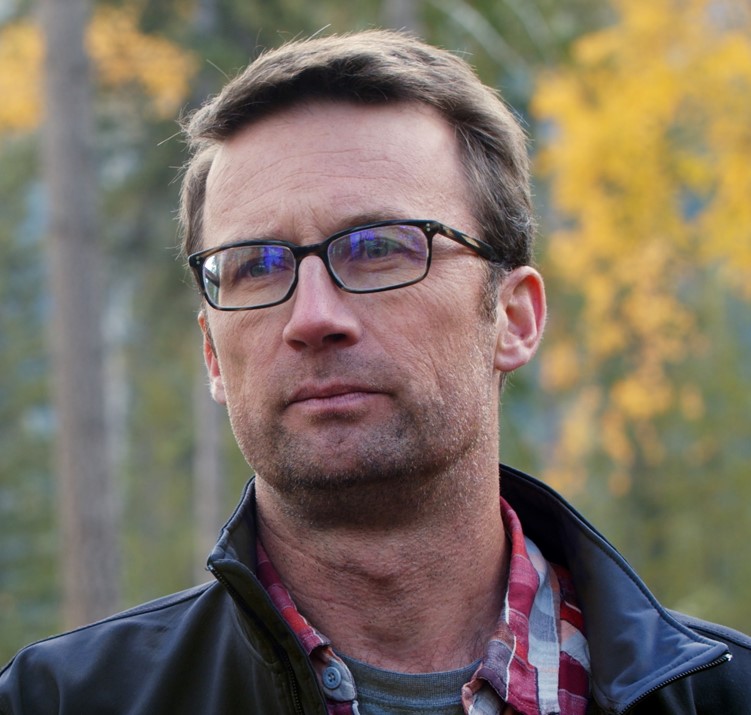 Thu, March 9, 2023. Live webinar at 12pm PST
Thu, March 9, 2023. Live webinar at 12pm PST
Presenter: Erik Leslie, RPF, Forest Manager, Harrop-Procter Community Co-operative
Climate change projections and risks have been widely discussed in broad terms for many years, but climate change adaptation principles have generally been poorly integrated into operational forest management decision-making. Real world examples of systematic climate change adaptation efforts in the forestry sector are sparse.
This presentation provides a case study that demonstrates how to integrate climate science and risk assessment into tangible forest management decision-making on a 11,300 hectare community forest on the West Arm of Kootenay Lake. The case study has an applied and practical focus that is oriented towards forest managers and decision makers.
Resources referenced in this talk:
- Harrop – Proctor Community Forest: Community Updates
- Article, BC Forest Professional Magazine, April edition: Climate change adaptation: Let’s make it real
- Friends of Kootenay Lake podcast: Erik Leslie interview (episode 24)
- FESBC press release: BC Community Co-operative Takes on Wildfire Prevention and Climate Change
View the recording for this talk here
Tales of taking evidence through to conservation action for two iconic mountain dwellers: caribou and grizzly bear
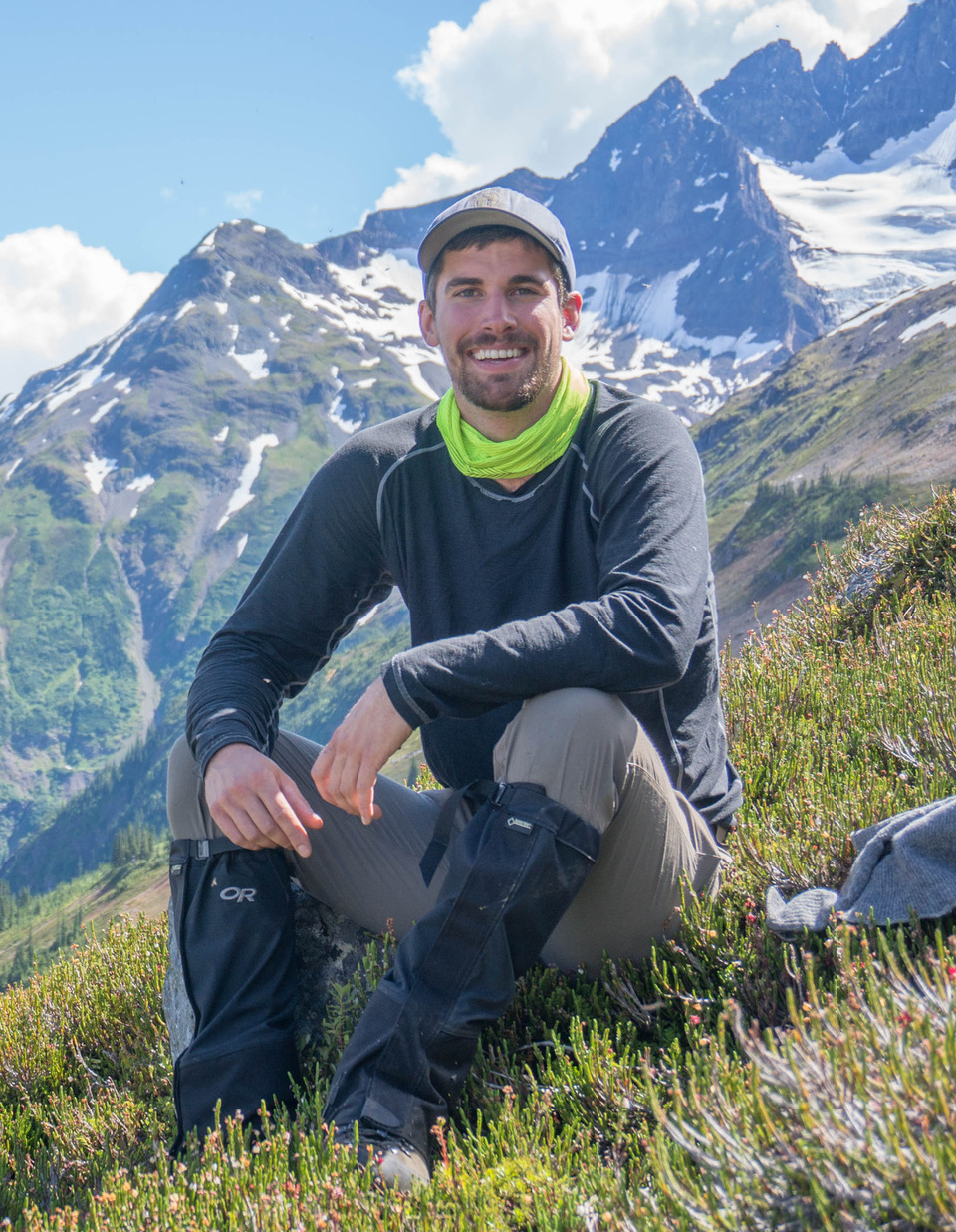 Thu, March 16, 2023. Live webinar at 12pm PST
Thu, March 16, 2023. Live webinar at 12pm PST
Presenter: Clayton Lamb, Wildlife Scientist, Biodiversity Pathways, Universities of British Columbia & Montana
Clayton will dive into decades of research on grizzly bears and caribou in British Columbia and provide two emerging examples of conservation success for these species. For caribou, the success focuses on the Indigenous-led recovery of the Klinse-Za caribou which have more than tripled in abundance due to actions by West Moberly and Saulteau First Nations. The second, grizzly bear, will focus not on promoting abundance but rather on coexistence between people and abundant grizzly bear populations in southeast BC—a uniquely abundant population of bears surrounded by threatened grizzly bears in Alberta and the US.
View the recording for this talk here
Season 6: Climate Disruption in the Upper Columbia Basin
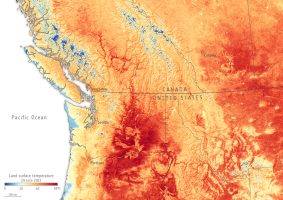 Each talk in season 6 focuses on the theme of Climate Disruption in the Upper Columbia. The talks address projected impacts, potential for adaptation, and what we can do with ecosystems that may in fact contribute to mitigation.
Each talk in season 6 focuses on the theme of Climate Disruption in the Upper Columbia. The talks address projected impacts, potential for adaptation, and what we can do with ecosystems that may in fact contribute to mitigation.
Talks were delivered live in a webinar format via Zoom, attendance was by donation. All talk recordings have now been posted below the speaker abstracts – please feel free to share these with your networks!
The following eight talks are presented such that the topics will build upon one another. We highly recommend that you take in the whole series in the order that they are presented below. This is especially the case for the first four talks.
An Overview of Climate Change in Southeast British Columbia: Climate History, Climate Projections and the Scope of the Problem
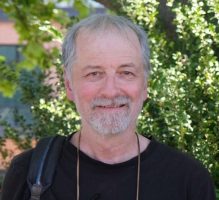 Thu, Jan 13, 2022. Live webinar at 12pm PST
Thu, Jan 13, 2022. Live webinar at 12pm PST
Presenter: Dr. Mel Reasoner, Climatic Resource Consulting
The presentation focuses on the climate history of the southeast corner of British Columbia and climate projections for the region. Following an overview of our understanding of the global warming problem, a compilation of climate records from the Southeast Fire Centre are discussed. Rising annual and seasonal temperatures and changing seasonal precipitation over the last century have resulted in a number of impacts to built and natural systems in the region. Downscaled model projections indicate the regions will experience hotter drier summers and warmer wetter winters in the coming decades. Consequently, continuing, and intensifying impacts are anticipated. Both the model projections and the observed rate of warming extrapolated into the future indicate that, by mid-century, the mean annual temperature in the region will be similar to, or warmer than, the hottest years of the 20th century.
View the recording for this talk here.
Recent and Projected Changes in Snow and Ice in the Columbia Basin
 Thu, Jan 20, 2022. Live webinar at 12pm PST
Thu, Jan 20, 2022. Live webinar at 12pm PST
Presenter: Dr. Brian Menounos, Canadian Research Chair in Glacier Change and University of Northern British Columbia
In the talk Brian considered the importance of snow and ice, observed changes over the satellite era (mid 1980-present) and projected changes to snow and ice. He will also use a few examples like the heat dome from this past summer to illustrate important interactions between extreme heat events and wildfire that serve to accelerate glacier loss.
The following are a list of resources mentioned in Brian’s talk:
- Accelerated change in the glaciated environments of western Canada revealed through trend analysis of optical satellite imagery. Bevington & Menounos
- Accelerated global glacier mass loss in the early twenty-first century. Hugonnet, McNabb, Berthier, Menounos, Nuth, Girod, Farinotti, Huss, Dussaillant, Brun, & Kääb
- Bias-corrected estimates of glacier thickness in the Columbia River Basin, Canada. Pelto, Maussion, Menounos, Radić and Zeuner
- Projected deglaciation of western Canada in the
twenty-first century. Clarke, Jarosch, Anslow, Radić, & Menounos - Glaciers in the Canadian Columbia Basin, a technical report. Canadian Columbia Basin Glacier and Snow Research
Network
View the recording for this talk here.
Climate Change Impacts on Water Quality in the Columbia River Basin of Canada
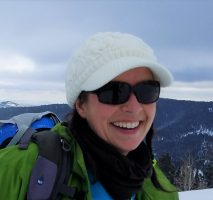 Thu, Jan 27, 2022. Live webinar at 12pm PST
Thu, Jan 27, 2022. Live webinar at 12pm PST
Presenter: Dr. Janice Brahney, Associate Professor, Watershed Sciences, Utah State University
The availability and quality of water is arguably one of the most important issues facing our ever- expanding human population. Beyond our own needs, sustainable water resources are essential to the proper functioning of nearly every ecosystem on the planet. A variety of both natural and anthropogenic factors can lead to declines in water quality, including the effects of storms, erosion, landslides, geology, atmospheric contaminants, and land-use. Climate change has the potential to exacerbate all of the above and introduce new and unexpected problems. In this talk we will examine the use of space-for-time substitutions as a tool to examine water quality changes that result from increased fire frequency glacial recession on water quality and aquatic habitat. We draw from data across southern British Columbia but pay particular attention the Canadian portion of Columbia Basin.
View the recording for this talk here.
Transition Hydrology: En Route to a New Runoff Regime
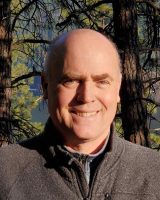 Thu, Feb 3, 2022. Live webinar at 12pm PST
Thu, Feb 3, 2022. Live webinar at 12pm PST
Presenter: Dr. Martin Carver, PEng/PGeo, PAg, Aqua Environmental Associates
Surface hydrology of the Columbia basin is transforming in response to the changing climate. The reorganization means adjustments in water quantity, quality and timing of flow, all of which are fundamental drivers in shaping the structure and function of ecosystems. Atmospheric rivers, rain-on-snow events, wildfire, seasonal heating, and other phenomena are growing in magnitude and impact due to climate disruption. Findings from current hydrologic science will be highlighted against recent examples emphasizing the Columbia Basin. A scientific approach to expanding monitoring in the Columbia basin will also be described along with an update on its implementation.
The following resources were discussed in Martin’s talk:
- Living Lakes Canada workshop proceedings: Expanding water monitoring within Canada’s Upper Columbia Basin, 2020
- Water monitoring and climate change in the Upper Columbia Basin – A summary of current status and opportunities, 2017, Columbia Basin Trust
- Columbia Basin Water Hub: Transboundary water data solution for the Columbia Basin, Living Lakes Canada
- 2021 Columbia Basin Watershed Monitoring Film Series
View the recording for this talk here.
The Mother Tree Project: Finding New Ways to Practice Forestry in our Changing Climate
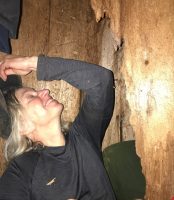 Thu, Feb 10, 2022. Live webinar at 12pm PST
Thu, Feb 10, 2022. Live webinar at 12pm PST
Presenter: Dr. Suzanne Simard, University of British Columbia, Lead of the Mother Tree Project
The Mother Tree Project is testing partial retention silviculture as an alternative to clearcutting to protect carbon stocks and biodiversity while promoting regeneration of resilient forests. Five levels of tree retention have been applied at eight locations that cover the climatic distribution of interior Douglas-fir in British Columbia. Within these treatments, four tree species and nine local and migrated genotypes of interior Douglas-fir have been planted. In this talk, three year results are presented. We have found that high levels of large tree retention protect carbon stocks, conserve the diversity of mosses and lichens, and promote natural regeneration. Of the carbon pools, aboveground tree biomass and forest floor suffered major losses with clearcutting, but this was significantly mitigated with tree retention, particularly at high levels. Retention of old mother trees promoted natural regeneration while enhancing survival of genotypes migrated from warmer climates. These results show promising alternatives to clearcutting for promoting forest resilience to climate change. Photo: Steve Ringman
View the recording for this talk here.
Grasping at Familiarity – Making Sense of the New Climates of the Columbia Mountains
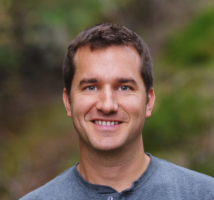 Thu, Feb 24, 2022. Live webinar at 12pm PST
Thu, Feb 24, 2022. Live webinar at 12pm PST
Presenter: Dr. Colin Mahony, RPF. Research Climatologist with the Ministry of Forests, Lands, Natural Resource Operations and Rural Development
The ecological implications of the climate crisis are profound and complex. To grapple with them, we often interpret projected climate changes in terms of climates that we are already familiar with, such as upward elevation shifts or spatial migration of historical climate types. These “climate analog” approaches are useful for decision-making, but they can also lead to a false sense of security. Climate change is affecting us and our ecosystems in disturbingly unfamiliar ways. The emerging “smoke season” and the 2021 heat dome are just two examples of conditions without any analog in our landscapes. In this talk, Colin will present new projections of 21st Century climate changes and bioclimatic shifts in the Columbia Mountains. He will also discuss the limitations of these approaches in the face of climate disruption, and strategies for facing our uncertain future.
View the recording for this talk here.
Climate Change and Wildfires in BC – What Does the Future Hold?
 Thu, March 3, 2022. Live webinar at 12pm PST
Thu, March 3, 2022. Live webinar at 12pm PST
Presenter: Dr. Mike Flannigan, Research Chair for Predictive Services, Emergency Management and Fire Science, Thompson Rivers University
Wildfires are a frequent occurrence in many regions of the world. These fires are the result of interactions between climate/weather, fuels (vegetation – grass, leaves, needles, shrubs etc.), and people. Our climate and associated day-to-day weather are changing rapidly due to human activities that may have dramatic and unexpected impacts on regional and global fire activity. A warmer world means a longer fire season, more lightning activity, and most importantly drier fuels. Drier fuels means it is easier for a fire to start, to spread and it means more fuel is available to burn that leads to higher intensity fires that are difficult to impossible to extinguish. Existing studies suggest regional increases in fire occurrence and area burned although there is significant temporal and spatial variability. Climate change will likely mean more wildfire in the future for many regions of the world including British Columbia. We will have to learn to live with wildfire.
The following resources were referenced in Mike’s talk:
- Wildfire smoke and public health risk. International Journal of Wildland Fire. 2015.
- Estimated global mortality attributable to smoke from landscape fires. 2012.
- Good Fire Podcast, Canada Wildfire. (Fire for ecological health and cultural empowerment by indigenous people around the globe).
View the recording for this talk here.
Climate Disruption – the Ultimate Disturbance?
 Thu, March 10, 2022. Live webinar at 12pm PST
Thu, March 10, 2022. Live webinar at 12pm PST
Presenter: Greg Utzig, MSc, PAg, Kutenai Nature Investigations, Kootenay Resilience
This series is wrapped up by Greg Utzig who will take the material discussed in the series up until now and discuss what it all means for our local ecosystems. Climate disruption, as Greg sees it, is a multi-dimensional biology experiment where we change almost all the variables at once. Where are we at in 2022? Where might we be at in 2085? How should we deal with the “unknown unknowns”?
View the recording for this talk here.
Knocking on Doors: reflections on hope and action
We’ve created an essay born out of the talks featured here in season 6 of the CREDtalks. At the end of the season, project coordinator Hailey Ross asked the contributing scientists how or where they find hope and inspiration to keep going in the face of climate change. The responses were wide-ranging, thought-provoking and made for a very engaging read, so we decided to weave them together in to an essay to share. Read the essay here.
We hope you enjoy this – that it makes you laugh, makes you sad, that you nod or shake your head, and that you let us know what you think. Thank you to Donna MacDonald for stringing these thoughts together for us.
Season 5
Tips and Tricks for the Organization and Analysis of Camera Trap Data
 Thu, Oct 8, 2020. Live webinar at 12pm PST.
Thu, Oct 8, 2020. Live webinar at 12pm PST.
Presenter: Chris Beirne, University of British Columbia, post-doc, Department of Forest Resources Management, WildCo lab. Researchgate . Twitter . Google Scholar
In this webinar we will take you on a whistle-stop tour through the process of getting a memory card out of a camera trap through to producing useful and simple data exploration in R. We will highlight some of the useful tips and tricks we have acquired from years of working with camera trap data. Participants will gain an understanding of what it takes to create a ‘good’ camera trap data set which is suitable for sharing with other researchers and collaborators. No experience in R is required to participate, but it will help!

This talk is co-hosted with the wildCAM network.
This talk recording can be accessed here. The Dropbox file referred to in this talk is here
Rocky Mountain Mammal Communities: Camera Trapping Brings the Effects of Development into Focus
 Thu, Oct 29, 2020. Live webinar at 12pm PST.
Thu, Oct 29, 2020. Live webinar at 12pm PST.
Presenter: Dr. Jason Fisher, BScH, MSc, PhD, Adjunct Professor, University of Victoria. Researchgate
The east slopes of the Canadian Rockies face extensive disturbance from forest harvesting, energy extraction, roading, and largely unregulated intensive recreation pressure. The sum of these effects on mammal communities remain unknown, as do the prospects for these species under future plans to develop swathes of the slopes for coal mining. Camera trapping over the last decade has cast new light on the effects of disturbance, and highlight the need for integrated landscape management spanning all these sectors to maintain the mountain mammal biodiversity.

This talk is co-hosted with the wildCAM network.
This talk recording can be accessed here.
The Swallow Hotel: Compensation Habitat for Barn Swallows in the Creston Valley Wildlife Management Area
 Thu, Nov 12, 2020. Live webinar at 12pm PST.
Thu, Nov 12, 2020. Live webinar at 12pm PST.
Presenter: Blaire Smith, Creston Valley Wildlife Management Area
You probably already know that the Creston Valley Wildlife Management Area (CVWMA) provides habitat for a variety of wildlife species, but did you know we are also in the barn swallow hospitality industry? Our “Swallow Hotel” provides nesting habitat for barn swallows and is one of only a few such structures. In this webinar, Blaire will describe the history leading up to the installation of the Swallow Hotel, explain why this compensation habitat was required, and provide an overview on monitoring and success to date.
This talk recording can be accessed here.
Climate Change and the Biodiversity Crisis
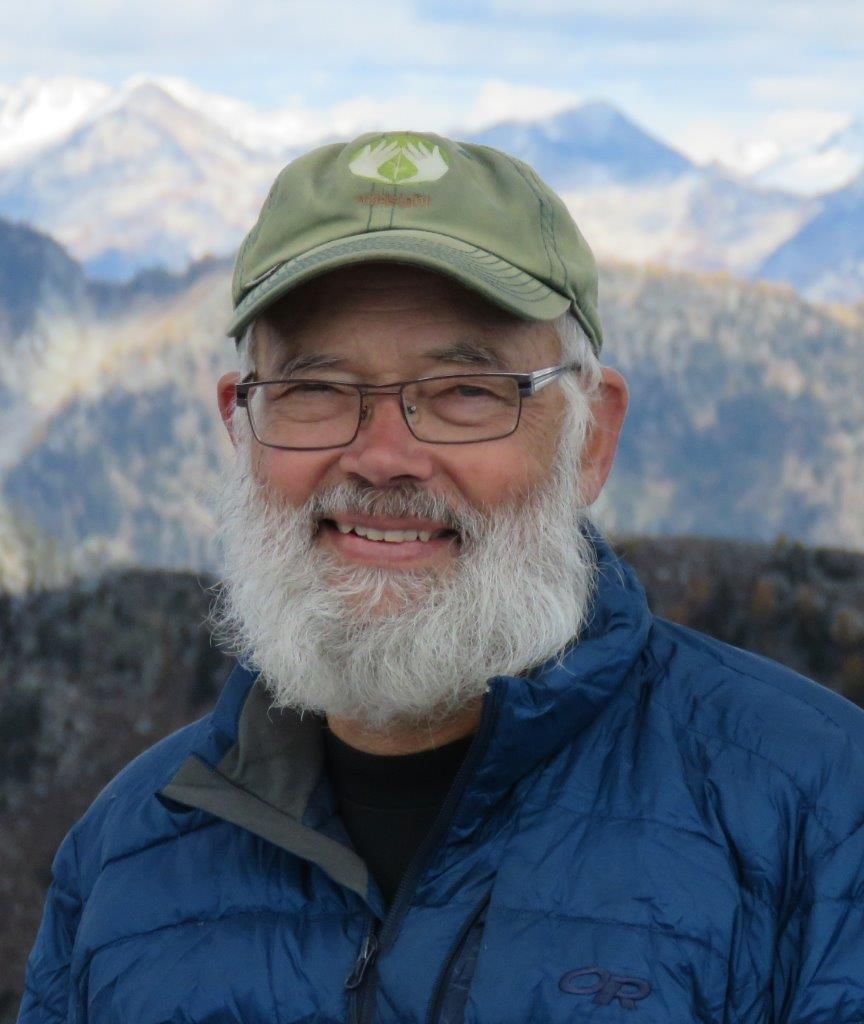 Thu, Nov 26, 2020. Live webinar at 12pm PST.
Thu, Nov 26, 2020. Live webinar at 12pm PST.
Presenter: Greg Utzig, MSc, PAg, Kutenai Nature Investigations, Kootenay Resilience
While the pandemic is creating a major crisis for Homo sapiens, climate disruption and the biodiversity crisis are affecting virtually all species. What do past experiences and current trends tell us about where we are likely headed in the next few decades? Are we living up to our Latin species and subspecies names?
A nice write-up on Greg Utzig can be found here.
This talk recording can be accessed here
What can we see from long term data on the Columbia River? Patterns of change through the Rainbow Trout Lens
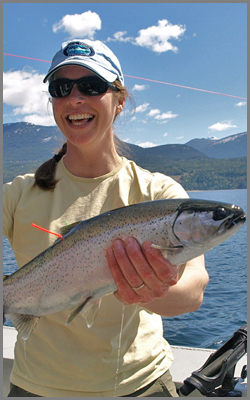 Thu, Jan 21, 2021. Live webinar at 12pm PST.
Thu, Jan 21, 2021. Live webinar at 12pm PST.
Presenter: Robyn Irvine, PhD, Poisson Consulting
The abundance, distribution and genetics of the Rainbow Trout in the Lower Columbia River (from Hugh L. Keenleyside Dam to the U.S. Border) have been studied for over 25+ years. Dr. Robyn Irvine will describe some of the patterns observed and what might come next scientifically in this CRED talk.
Co-Authors: Jeremy Baxter, Joe Thorley, Mark Fjeld, and Phil Bradshaw.
This talk recording can be accessed here
Season 4
Ancient Inland Temperate Rainforest in the Monashee Mountains
Thu, Nov 7, 2019. 12pm. Revelstoke Community Centre, MacPherson Room
Presenter: Amber Peters, BSc, staff biologist for the Valhalla Wilderness Society.
In 2018 the Valhalla Wilderness Society sponsored a scientific expedition into the largest of two contiguous valleys to record an ecological inventory of plant, macrofungi and lichen species using standard sampling and photodocumentation methods. Biologists Toby Spribille, Curtis Björk, Wayne McCrory, Tyson Ehlers and Amber Peters conducted exploratory research to determine the ecological and inland rainforest values of the newly discovered wilderness. An impressive diversity of rare habitats and species were discovered, including abundant growth of oceanic lichen species indicative of a true rainforest ecosystem. Researchers have since concluded that the Rainbow-Jordan Wilderness harbours stands of some of the richest Inland Temperate Rainforest yet found in the province, making the unroaded and unlogged wilderness a valuable refuge for wildlife and sensitive plant communities. The presentation will include a summary of rare and at-risk species that have been inventoried to date, as well as photography by the researchers and by well-known professional photographer Douglas Noblet.
The Valhalla Wilderness Society have submitted a proposal for this area of land to be included in a protected areas proposal currently under review with the province of British Columbia and the Federal government.IMAGE: Douglas Noblet
A recording of this talk can be found here.
Songbirds of Mount Revelstoke and Glacier National Parks
Thu, Nov 28, 2019. 12pm. Revelstoke Community Centre, Boulder Room
Presenter: Lisa Larson, MSc., Ecologist Team Lead, Mount Revelstoke and Glacier National Park, Parks Canada
Lisa will provide an overview of the Ecological Integrity Monitoring program for Mount Revelstoke and Glacier National Park and highlight how songbirds fit into this program. She will also share bird monitoring results locally and more generally for the whole of the Mountain National Parks. IMAGE: Perisoreus canadensis, Parks Canada
We experienced technical difficulties with this talk recording, further editing required but will be posted soon.
What’s up with Wolverines? 10 years (and counting) of Wolverine Research in the Columbia Region
Thu, Jan 16, 2020. 12pm. Revelstoke Community Centre, MacPherson Room
Presenter: Mirjam Barrueto, PhD (candidate), University of Calgary
Wolverines are rare but insanely cool animals found in Canada’s north, but they also haunt the remote mountains of southern British Columbia. All recent research suggests that their populations throughout Canada are under pressure because of habitat fragmentation, habitat degradation, and locally high harvest rates. Let’s say we decide that we don’t want them to disappear from our mountains: Do we have the information we need to make a plan? What can we do to prevent them going the way of the caribou? IMAGE: Matt Kynoch
A recording of this talk can be found here.
Wildlife Mitigations and Highway Improvements
Thu, Jan 23, 2020. 12pm. Revelstoke Community Centre, MacPherson Room
Presenter: Danielle Backman, Environmental Assessment Scientist,
Mount Revelstoke and Glacier National Parks
In 2015, Parks Canada launched a significant infrastructure investment program. In Glacier National Park, through these investments and the environmental review process, several wildlife mitigations were recommended and included in project work. By the end of the 2019 construction season completed projects will include amphibian crossings, animal ramps off the snowsheds, concrete barriers to help keep goats off they highway, a wildlife underpass created from an existing large steel culvert, and several hundreds of thousands of dollars in investments to improve aquatic ecology (culvert improvements). These initiatives are novel, based on emerging science and represent significant environmental gains – while improving park roads and assets. IMAGE: Parks Canada
A recording of this talk can be found here.
Pity the Analyst: Designing Camera Trap Software for Efficient Image Inspection
Thu, Feb 6, 2020. 12pm. Revelstoke Community Centre, MacPherson Room
Presenter: Saul Greenberg, Emeritus Professor, University of Calgary
This talk describes and explains design patterns for software that supports how analysts can efficiently inspect camera trap images and encode its data. Broadly speaking, a design pattern identifies a commonly occurring problem and a general, reusable design approach to solving that problem. A developer can then use that design approach to create a specific software solution appropriate to the particular situation under consideration. In particular, design patterns for camera trap image analysis address solutions to commonly occurring problems faced by analysts when inspecting a large number of images and entering data describing those images. We base our design patterns on our understanding of what analysts do, acquired over eight years developing and iteratively refining the freely-available Timelapse image analysis system. For each design pattern presented, we describe the problem, the design approach that solves that problem, followed by a concrete example of how Timelapse realizes that design pattern in practice. These design patterns can be used to inform the design of camera trap systems, or to help project managers decide between competing software products by considering if their interfaces include design pattern solutions relevant to the project.
Saul Greenberg is an Emeritus Professor in the Department of Computer Science at the University of Calgary. He specializes in Human Computer Interaction, which places people at the center of system design. His interests go far beyond computing, where they should relate to this audience. He is an avid outdoor geek: backcountry skiing, mountain biking, hiking, and so on. His family all have worked for Parks Canada in positions ranging from Parks Planning, to Resource Conservation to Public Safety. He became interested in camera trap image analysis when he saw a biologist friend of his painfully entering tagging data on a spreadsheet while reviewing images. ‘Surely we can do better than that’ he thought.
Saul then designed and created the Timelapse, a system that supports how analysts tag camera trap images. He is currently collaborating with the Microsoft AI for Earth team (a Microsoft ‘AI for good’ initiative), where analysts can import image recognition data into Timelapse and use that as part of their workflow. It is currently used by various agencies and individuals around the world (including Parks Canada) to analyze their corpus of millions of images.
A recording of the content delivered at our CREDtalk can be found here. This is not the actual CREDtalk which was 1hr in length (too long to post), rather, this is a condensed version of the same subject matter.
Paper referenced in the above talk and during our CREDtalk: “User Interface Design Patterns for Wildlife-Related Camera Trap Image Analysis”
Link to the Timelapse web site, including software downloads, manuals, etc. is here
Season 3
Native Bee Fauna of the Columbia Mountains
Tue, June 18, 2019. 7pm. Revelstoke Community Centre – MacPherson Room
Presenter: Lincoln Best, Taxonomist with the Oregan Bee Project and Atlas at the Oregon State University, Corvallis in partnership with the Oregon Department of Agriculture. He instructs the Oregon Bee School, a course in taxonomy, and many other short courses and field courses. He spends his winters at University of Calgary where he is the pollinator taxonomist for the Ecologics Lab, generating biodiversity data for Landscape Ecology projects. Lincoln provides support to a large network of diverse clients in Canada and abroad.
Lincoln Best will introduce the native bee fauna of the Columbia Mountains and discuss their relation to regional flora, interesting species, and how we can enhance habitat to preserve them. This talk is co-hosted with the Revelstoke Local Food Initiative. IMAGE: Lincoln Best
Alternative Forest Harvesting Practices in Revelstoke
Wed, November 28, 2018. 12pm. Revelstoke Community Centre – MacPherson Room
Presenter: Kevin Bollefer, RPF, Revelstoke Community Forest Corporation, Revelstoke, British Columbia.
The Revelstoke Community Forest Corporation (RCFC) is a forest company owned by the City of Revelstoke. RCFC owns and operates a 120,000 hectare Tree Farm Licence (TFL 56) north of Revelstoke. Through a series of photos and a discussion, Kevin will talk about the trials and tribulations of alternative harvesting practices on TFL 56, looking at suitability, successes and lessons learned in partial cutting. IMAGE: Kevin Bollefer
This talk was recorded and can be found here.
50 Years of Habitat Change in the Revelstoke Reach
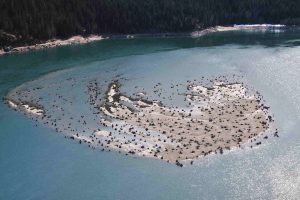 Wed, December 12, 2018. 12pm. Revelstoke Community Centre – MacPherson Room
Wed, December 12, 2018. 12pm. Revelstoke Community Centre – MacPherson Room
Presenter: Ryan Gill, RPBio, Wildlife Biologist
With the construction of the Hugh Keenleyside dam in Castlegar, 200km of
the Columbia river, and the Arrow lakes was inundated. Prior to
inundation, the valley bottom was a matrix of riverine, riparian habitat,
and rural development. Since impoundment, this landscape has gone
through significant changes, with subsequent changes to the wildlife
using habitat in the drawdown zone. There have been several studies on
almost all aspects of the effects of reservoir operation on the natural
environment of the Revelstoke Reach, this talk will be a high level view of those changes between 1969 and 2018. IMAGE: Harry van Oort
NOTE: Unfortunately the recording of this presentation did not work due to faulty equipment. You can access Ryan’s power point presentation HERE. Additional documents that may be of interest include the Arrow Lakes Reservoir Mid-Evaluation Scenarios Report, the feedback to this report, an updated report from June 2017, and an addendum to scenario 3.
Keeping Toads off Roads: Western Toad Ecology and Hwy 31A mortality at Fish & Bear Lakes
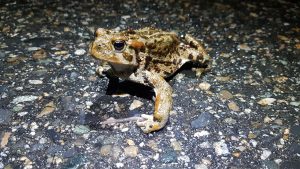 Wed, January 9, 2019. 12pm. Revelstoke Community Centre – MacPherson Room
Wed, January 9, 2019. 12pm. Revelstoke Community Centre – MacPherson Room
Presenter: Marcy Mahr, MSc, Senior Research Biologist, Valhalla Wilderness Society
Western toads by their very nature and lifecycle require both terrestrial hibernating and aquatic breeding habitats. Consequently, a highway running between these habitats can result in a lot of dead toads on the road during annual migrations. Marcy’s presentation will discuss how in a remote, mountain pass between Kaslo and New Denver in the south Selkirk Mountains, a population of western toads are getting some assistance from the Valhalla Wilderness Society to cross Highway 31A, a popular route for summer tourists. Over the past 4 years, researchers and volunteer Toad Ambassadors have been keeping thousands of adult toads and baby toadlets out of harm’s way while identifying highway crossing hotspots where toad underpasses and directional fencing could be installed. IMAGE: Marcy Mahr
Using eBird and DNA Analysis to Track the Evolution of BC’s “Whiskyjacks”
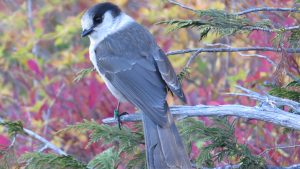 Wed, February 20, 2019. 12pm. Revelstoke Community Centre – MacPherson Room
Wed, February 20, 2019. 12pm. Revelstoke Community Centre – MacPherson Room
Presenter: Dr. John Woods, zoologist in Revelstoke
Biodiversity in British Columbia is nothing short of spectacular. Our latitudinal stretch, convoluted topography, medley of climates, and perch on the western rim of the continent, have given rise to a variety of species unparalleled within Canada. In this presentation, we’ll look at the intraspecific evolution and post-glacial dispersal of Canada Jays and find that our province is even more wonderful than we thought! IMAGE: Canada Jay, John G. Woods
Season 2
The Columbia River Treaty and Options for Arrow Lakes Reservoir
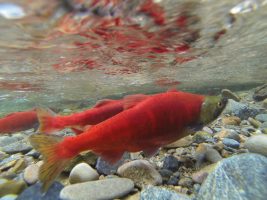
Thu, November 16, 2017. 12pm. Revelstoke Community Centre – MacPherson Room
Presenter: Alan Thomson, MRM P.Eng. Water Resources Consultant, Mountain Station Consultants, Nelson, British Columbia.
In preparation for negotiations concerning the Columbia River Treaty with the United States, Alan and a team of Canadian Columbia River basin experts have studied Arrow Lakes Reservoir literature, data and operations to explore and develop alternative reservoir operation scenarios that may enhance ecosystem function while maintaining power generation and flood risk management functions. Their report is found on the provincial CRT blog site here.
Alan’s presentation will introduce the Columbia River Treaty, some of the environmental and other impacts due to operation on the Arrow reservoir for primarily hydrogenation and flood control purposes, and then summarize one Arrow Lakes reservoir operational scenario that shows promise for addressing some known environmental impact concerns in the reservoir. IMAGE: Fish and Wildlife Compensation Program
Why Invasives Matter – to all of us

Tue, November 21, 12:15pm. Revelstoke Community Centre – MacPherson Room
Presenter: Sue Davies, Columbia Shuswap Invasive Species Society, Program Coordinator.
Invasive species invade. Their invasion into new territory often creates negative impacts on the environment and those who live in it. So why should you care about invasives? Invasives can destroy habitat for native flora and fauna, but they can also damage our economy, disrupt tourism and recreation, and send our energy and utility costs soaring. Reducing the spread of invasives is in all of our best interests, and if we take some simple steps, we can often prevent the spread of these harmful invaders. IMAGE COLLAGE: Sue Davies
This talk was recorded and can be found here.
Mending the Meadows: Restoration on the Summit of Mount Revelstoke
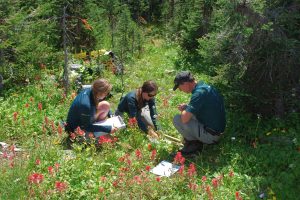
Tue, November 28, 12pm. Revelstoke Community Centre – MacPherson Room
Presenter: Mindy Skinner, Parks Canada Resource Management Officer
Visitors from around the world are drawn to the summit of Mount Revelstoke every summer for the vibrant and colourful displays of subalpine wildflowers. Over the past 100 years, this influx of people has impacted the very thing they come to see. Through on-going restoration and monitoring, Parks Canada is protecting this incredible landscape for both the wildflowers and the people. The talk will provide an overview of the history of human impact on the summit, including more recent monitoring and future restoration efforts that are planned. IMAGE: Parks Canada
Ungulate Population Management, Value or Science Based?
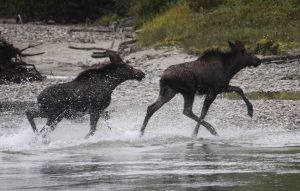
Tue, December 5, 2017. 12pm Revelstoke Community Centre, MacPherson Room.
Presenter: Meghan Anderson, Wildlife Infometrics Inc.
Ungulates have important hunting and wildlife viewing values. We also value them for the ecological role they play. With caribou and moose populations declining across BC reflecting on historic population data to inform our opinions is a germane topic. IMAGE: Moose calves in Goldstream, Saakja Hazenburg
This talk was recorded can be found here.
One Fish, Two Fish: Living like a Kokanee in our Reservoirs
Revelstoke Community Centre, MacPherson Room.
Presenter: Karen Bray, BC Hydro Natural Resource Specialist
The appearance of bright red fish in late summer signals the much anticipated and welcome start of the annual kokanee spawning run in streams around us. The abundance of this adaptable species is linked to the creation of large reservoirs and their life history can provide us valuable means to monitor changes in productivity that could influence both aquatic and terrestrial environments. IMAGE: Ben Meunier, FWCP
Nesting success of Breeding Birds within the Arrow Lakes and Kinbasket Drawdown Zones
Tue, January 23, 12pm. Revelstoke Community Centre, MacPherson Room.
Presenter: Catherine Craig, Wildlife Biologist with Cooper Beauchesne and Associates
 Since 2008, Cooper Beauchesne and Associates Ltd. has monitored the habitat use and success of breeding birds nesting within the Arrow Lakes and Kinbasket drawdown zones. The fluctuating water levels within these reservoirs have the potential to impact the nest and post-fledging survival of birds nesting within them. This talk will provide an overview of the results so far, with a focus on recent research on the survival of juvenile Savannah Sparrows. IMAGE: Devon Anderson
Since 2008, Cooper Beauchesne and Associates Ltd. has monitored the habitat use and success of breeding birds nesting within the Arrow Lakes and Kinbasket drawdown zones. The fluctuating water levels within these reservoirs have the potential to impact the nest and post-fledging survival of birds nesting within them. This talk will provide an overview of the results so far, with a focus on recent research on the survival of juvenile Savannah Sparrows. IMAGE: Devon Anderson
The talk was recorded and can be found here.
Annual and seasonal survival of Yellow Warbler – Which Stages of the Annual Cycle are Most Costly?
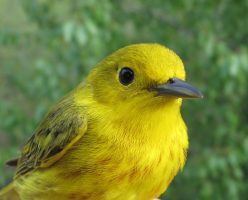 Tue, January 30, 12pm. Revelstoke Community Centre, MacPherson room.
Tue, January 30, 12pm. Revelstoke Community Centre, MacPherson room.
Presenter: Michal Pavlik, PhD candidate with Simon Fraser University, Wildlife Biologist with Cooper Beauchesne and Associates
Yellow Warbler is a small passerine that visits British Columbia annually for about three months of the year. A small breeding population of these warblers which nest in the drawdown zone of Arrow Lake reservoir near Revelstoke has been monitored since 2004. While a lot of information has been acquired about their local breeding ecology, relatively little is known about how these birds survive the remaining 9 months of the year. As long-distance migrants, they face many challenges on both their breeding and wintering grounds, as well as during migration. In this talk, Michal will present part of his PhD thesis and talk about the annual and seasonal survival of Yellow Warbler with a focus on identifying stages of the annual cycle when mortality of these birds is the highest. IMAGE: Michal Pavlik
Season 1
Water Monitoring & Climate Change

Friday May 12, 2017. 7-8pm. Revelstoke Community Centre
Dr. Martin Carver will be presenting Columbia Basin Trust’s “Water Monitoring and Climate Change Report.” Water monitoring is particularly relevant to higher-volume water users such as communities, hydropower operators, agricultural producers, industrial operations and snowmaking at ski resorts, and can also benefit commercial and private recreational users.
The report provides a snapshot of current scientific knowledge about water resources within the Basin. It outlines:
– the state of water monitoring efforts
– how climate change is projected to affect various types of water resources such as snowfall, glaciers, rivers and lakes
– opportunities to strengthen understanding of water resources in the future.
For more information on the report, see here
This presentation was complimentary event to the “One River. Ethics Matter.” conference, taking place at the Revelstoke Recreation Centre on Saturday, May 13th, 9am – 4pm. For more information on the conference, see here IMAGE: Harry van Oort
KONELINE: Our Land Beautiful – Film Screening & Discussion with the film’s producer Nettie Wild.
 Thursday March 9, 2017. 6:30pm. Roxie Theatre, Revelstoke
Thursday March 9, 2017. 6:30pm. Roxie Theatre, Revelstoke
Koneline: Our Land Beautiful, is a compelling art film which tells the story of the many different people who wander, work, dream, create, and conserve throughout Northwestern British Columbia and celebrates their common love and respect for the land. Set deep in the traditional lands of the Tahltan First Nation, Koneline (pronounced kona-leena) captures the beauty of the land while the wilderness undergoes irrevocable change. The film shares with it’s audience a different, non-lecturing, way of seeing and being – from hunters to miners, and guide outfitters to elders of the Tahltan First Nation, Koneline shares their stories of politics, drama, and humour displayed in a visually stunning and poetic presentation. The film smashes stereotypes of the people who work and live in the region: white hunters carry bows and arrows while members of the Tahltan First Nation hunt out of the back of a pickup truck with high powered rifles, both Native and caucasian diamond drillers reporting to work while elders blockade them, young Natives struggling to preserve their dying language and older white men sing to their stuffed moose. Although the film is set in a region outside of Revelstoke, the stories there reflect a common thread throughout BC – mixing resource extraction, with wilderness preservation, and an adventurous way of life.
The award winning film creates an experience full of complexity which parks all assumptions, shows the stories of the land from several perspectives, and compels the audience to look at their own journeys as a mutual project, working with everyone to create a sustainable planet – socially, economically, and environmentally.
Join us, along with our co-hosts: Revelstoke Community Forest Corporation, Revelstoke Snowmobile Club, and Monashee Outfitting Ltd on Thursday, March 9th at the Roxy Theatre Revelstoke, doors at 6:30pm. There will be a Q&A session with the film’s director, Nettie Wild, after the screening.
Advance tickets will be available at Valhalla Pure and Rough Country for $10 ($12 at the door).
Discovering Endangered Bat Species in the Nakimu Cave System, Glacier National Park B.C
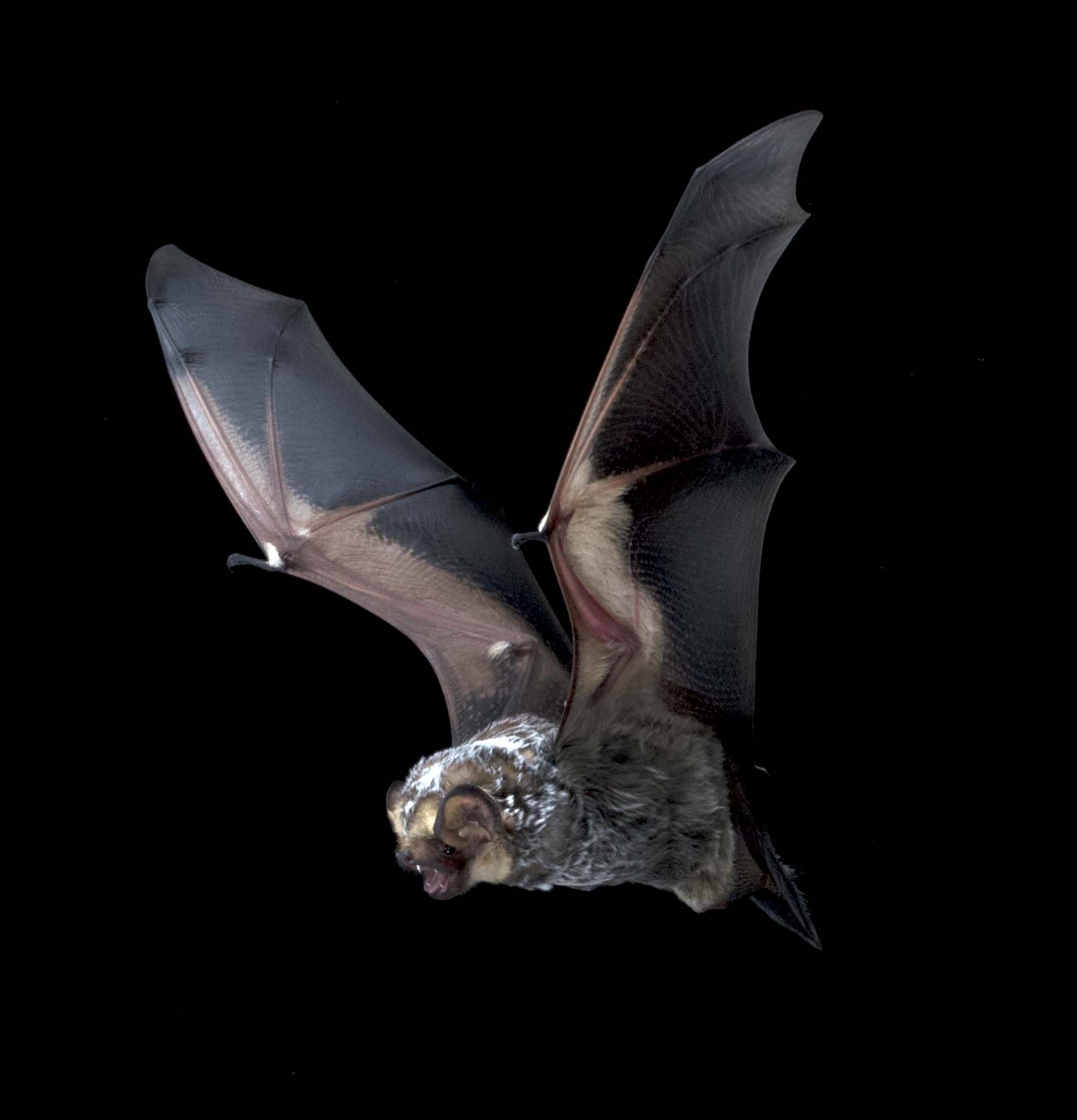
Wednesday March 8, 2017. 12pm. Revelstoke Community Centre
Parks Ecologist Sarah Boyle from Mount Revelstoke and Glacier National Parks will present a 20 minute lively talk to highlight the history of the Nakimu Cave System and the recent discovery of the bat species that call it home. IMAGE: B. Fenton
Whitebark Pine Restoration in Mount Revelstoke and Glacier National Parks BC
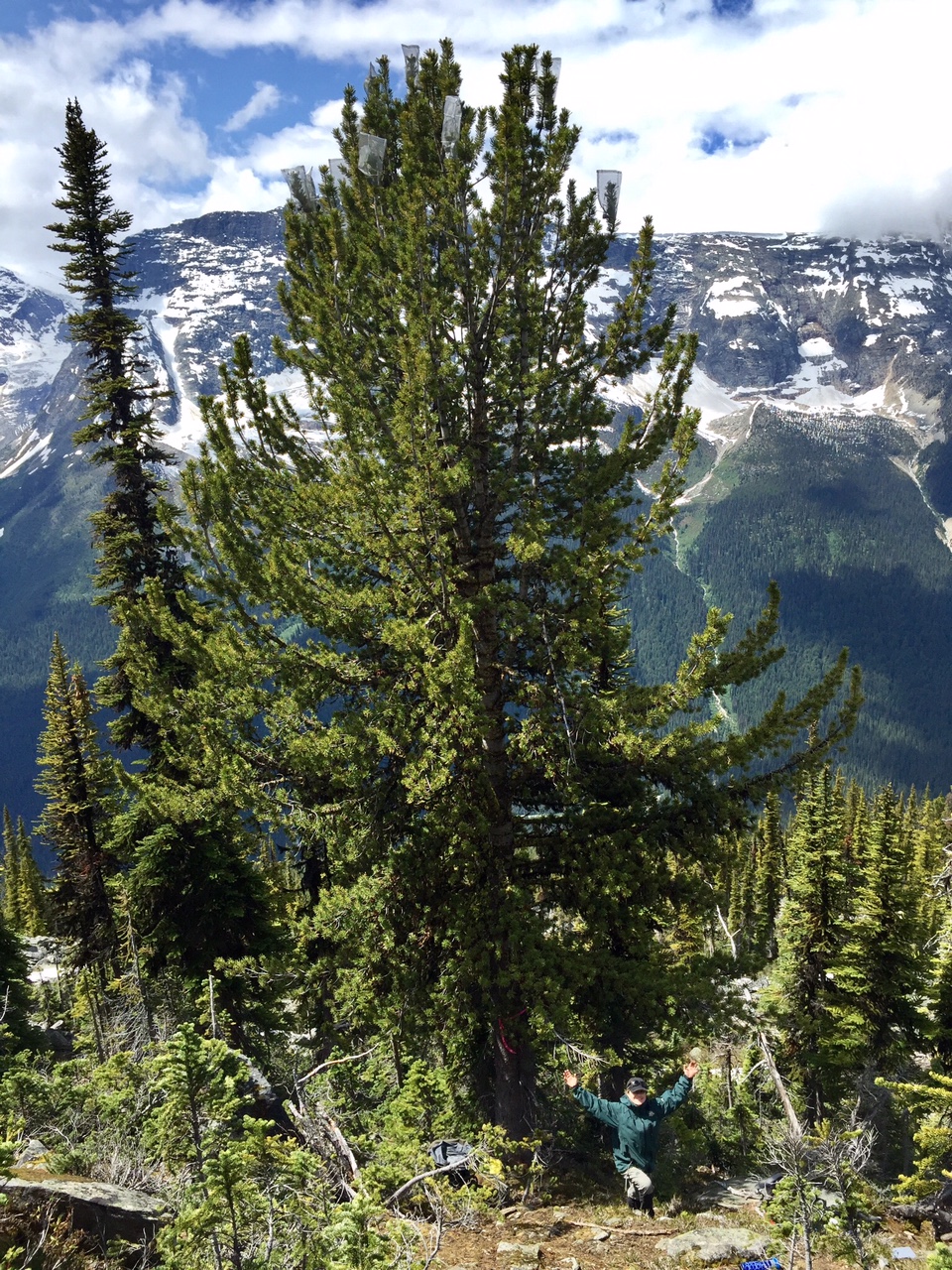
Wedndesday Feb 22, 2017. 12pm. Revelstoke Community Centre
Natalie Stafl, Parks Canada Resource Management Officer will present an update on Whitebark Pine Restoration in Mount Revelstoke and Glacier National Park.
Whitebark pine is a keystone sub-alpine species that is federally listed as Endangered under the Species at Risk Act. Come learn about the on-going initiatives in Mount Revelstoke and Glacier National Park to protect, restore and enhance whitebark pine and associated habitat. Park staff will highlight elements of their whitebark pine conservation program including cone collection, disease resistance trials, prescribed fire and targeted planting in the parks. IMAGE: Parks Canada
The Western Painted Turtle: Revelstoke’s Resilient Reptile
 Thursday November 3, 2016. 7pm. Revelstoke Community Centre
Thursday November 3, 2016. 7pm. Revelstoke Community Centre
We welcome Dr. Karl Larsen who will tell us about the Western Painted Turtle – a fascinating animal, which has adapted to tolerate harsh conditions. Because of its resilience, this species of turtle has managed to survive further north than any other turtle in North Ameica, with the population in Revelstoke representing one of the more extreme northern points in its range. The painted turtle population which inhabit the Arrow Lakes Reservoir are of particular interest since they are able to tolerate the climate of the area but can also the dynamics of the reservoir. Through partnerships between BC Hydro, LGL Ltd., the Okanagan Nation Alliance, and Thompson Rivers University (TRU), intense research on these animals has been brought to bear since 2010. Dr. Karl Larsen of TRU will provide an overview of this work, particularly that which was conducted by graduate students to improve our understanding of the Revelstoke turtle population, including their relationship to their environment and the potential threats to their long-term perseverance. This work shows the amazing resilience of these animals, and although certain knowledge gaps need to be filled, the animals appear to be handling life in the reservoir fairly successfully. Dr. Larsen’s presentation will also include a brief overview of how amphibians and reptiles deal with northern environments.
Karl Larsen grew up in Revelstoke, where he developed a life-long interest in wildlife. After graduating from Revelstoke Secondary School, he went on to compete BSc, MSc and PhD degrees at the University of Victoria and the University of Alberta. Along with the graduate students in his lab, he has studied a variety of animals, including snakes, badgers, spadefoot toads, mice, goshawks, pikas, pillbugs and squirrels. He currently teaches senior-level courses in wildlife conservation and management in the Department of Natural Resource Sciences at Thompson Rivers University in Kamloops. IMAGE: Karl Larsen
Dr. Alan Burger, Renown Photographer and BC Nature President
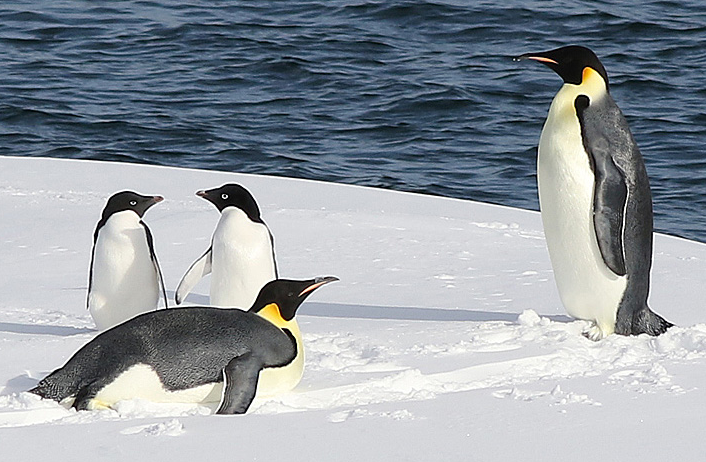
Monday October 3, 2016. 7pm. Revelstoke Community Centre
To help kick off our series, we invite you to join recently retired seabird biologist, university professor, and BC Nature President Dr. Alan Burger, as he discusses his personal experiences aboard small adventure-tourism vessels to the Antarctic and Arctic as a naturalist and lecturer. His talk will focus on Global climate change and its unexpected effects on these polar regions and their wildlife, while touching on the impacts of climate change in BC.
Enjoy his photos of wildlife and spectacular scenery and learn how our activities affect life at the extremes of the earth.
As the President of of BC Nature, the federation of naturalist clubs in BC, he will discuss the possibilities of a Naturalist Club in Revelstoke supported by BC Nature. IMAGE: Alan Burger


